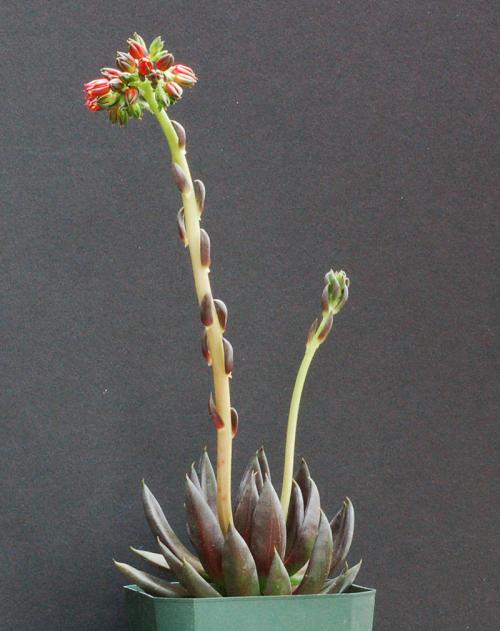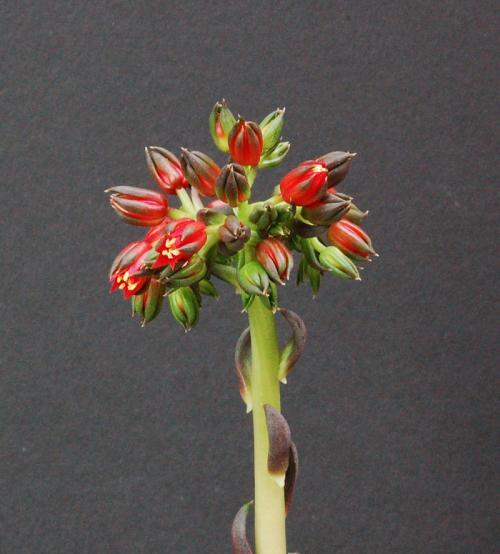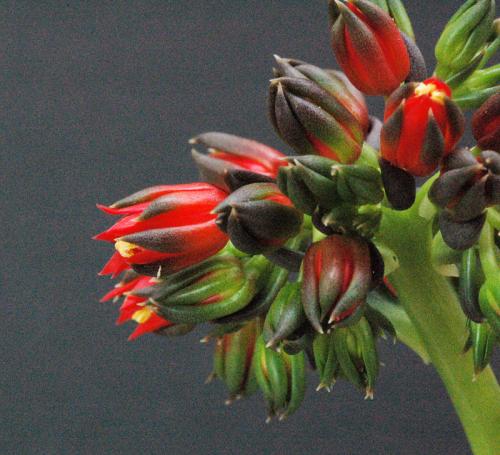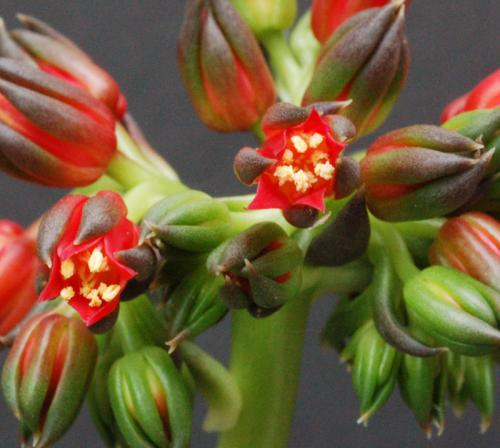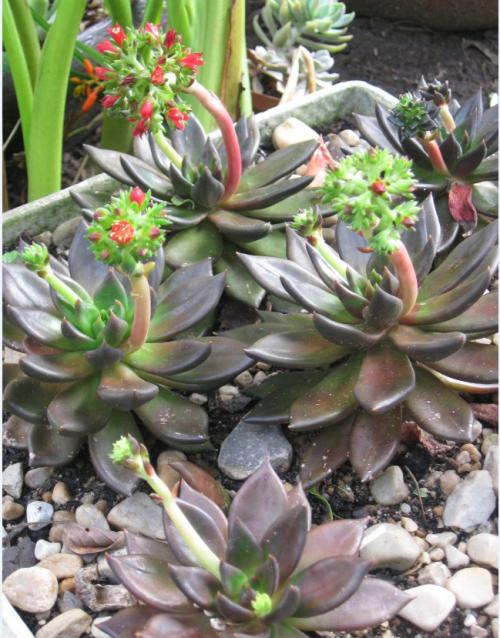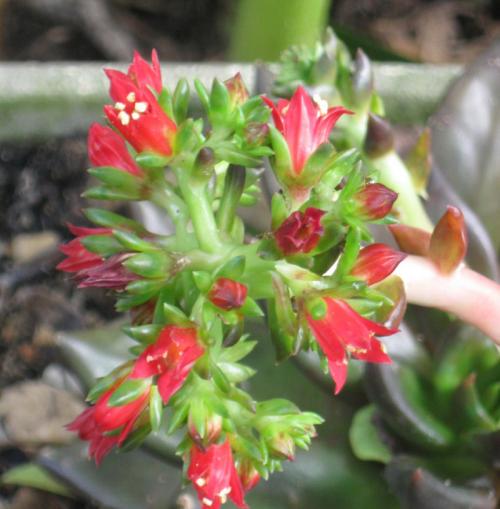AFFINIS Walther, 1958 (engl./ fr.)
Series Occidentales
Type : Mexico, without definite locality. CAS 403156.
Etymology : Latin adjective affinis = similar, referring to E. craigiana.
Distribution : Mexico (Durango, Sinaloa)
First Description by Walther in Cactus and Succulent Journal (US) 30(4): 105-107.1958 (from a plant collected by Fritz Schwarz and given to Paul Hutchison by R. Flores (UC 54/1241), later grown in Strybing Arboretum, Golden Gate Park, San Franciso, CA, USA) :
Stem very short, mostly simple.
Rosettes dense.
Leaves numerous, oblanceolate, shortly acuminate, to 5 cm long and 2 cm broad, strongly convex beneath, almost flat above, somewhat upcurved above middle, bownish-olive, at base yellowish-green.
Inflorescences 2 to 3, to 15 cm tall, peduncle erect, its bracts few, oblong, acute, to 2 cm long, ascending-spreading, green, inflorescence a flat-topped cyme with 3 to 5 spreading branches and no elongated central axis, each branch with 5 to 7 flowers, pedicels 8 mm long.
Flowers : Sepals appressed, subequal, ovate-deltoid to oblong-lanceolate, turgid, acute, tips somewhat incurved, olive-green, corolla urceolate-campanulate, bluntly pentagonal, 10 mm long, to 8 mm in diameter at the spreading petal-tips, scarlet, petals with small, but definite basal hollow within and apiculate tips, stamens 5 - 9 mm long, carpels 8 mm long, whitish, with slender straw-yellos styles, nectaries 1 mm wide, narrowly lunate-reniform, straw-yellow.
Flowers in August.
Cytology : n = 30, 60.
Note:
1. As indicated above, E. affinis has first been published by E. Walther in Cactus & Succulent Journal US in 1958. Walther died in 1959 and the monograph on genus Echeveria he had been working on was by far not complete at that time, it took another 13 years until it was finally published in 1972. It contains the descriptions already published in journals as well as of some new ones including whenever possible photos by E. Walther or alternatively photos by Reid Moran. The latter applies to E. affinis : The protologue photos apparently not being traceable any longer, the editors replaced them with two photos of a plant collected by Moran and Kimnach in 1959 (Moran & Kimnach 7619). Photo Fig. 23 shows this plant flowering in San Diego 11 August 1960 and photo Fig. 25 shows the inflorescence of the same plant 4 years later, 1 August 1964. Very surprisingly the inflorescences on the two photos are fairly different, in 1960 the plant has a rather compact inflorescence while in 1964 it is much more lax. This suggests that - obviously - in cultivation E. affinis is subject to alterations. And in his notes on E. affinis Reid Moran even stated that cultivated plants also differ from wild plants and this in several respects.
Conclusion : E. affinis is very variable ; and the long lasting suspicion that the two photos might show two fairly similar but not identical plants is obsolete.
2. Walther's description has the major flaw that the origin of the plant he described as E. affinis is completely obscure.
3. E. affinis is similar to E. craigiana, but with a shorter inflorescence.
4. A form found in Cerro Surutato has a longer stem, larger and greener leaves and a more extended panicle than typical E. affinis, it has been published as Echeveria coppii.
5. Offered twice as
- ISI 269 (1959) "This collection differs from that of the type (see the C&SJ., 30:195) in its blacker, slightly differently shaped leaves. Collected by R. J. Taylor under bushes and trees on the road between Mazatlan and Durango, Mexico. The surrounding country is mountainous, the altitude about 5000' with rains even in summer."
Ignoring this indication, nurseries have distributed this special form later as Echeveria ‘Black Knight’ – an obsolete name.
- and ISI 1556 (1985), again "an especially dark form".
Short description by M. Kimnach in Illustrated Handbook of Succulent Plants, 2003. (engl. / fr.)
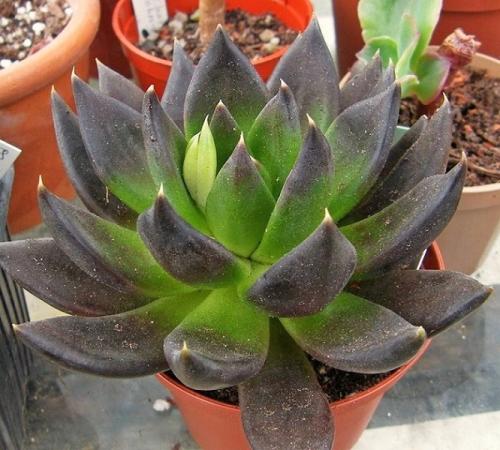
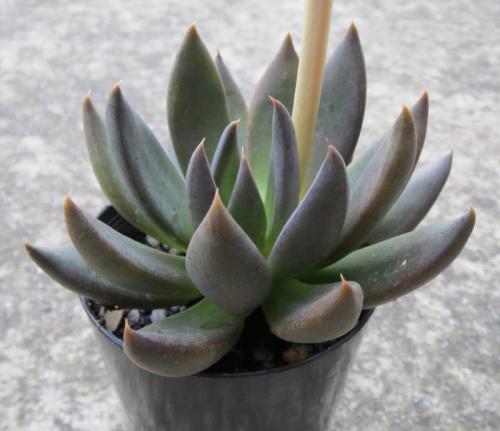
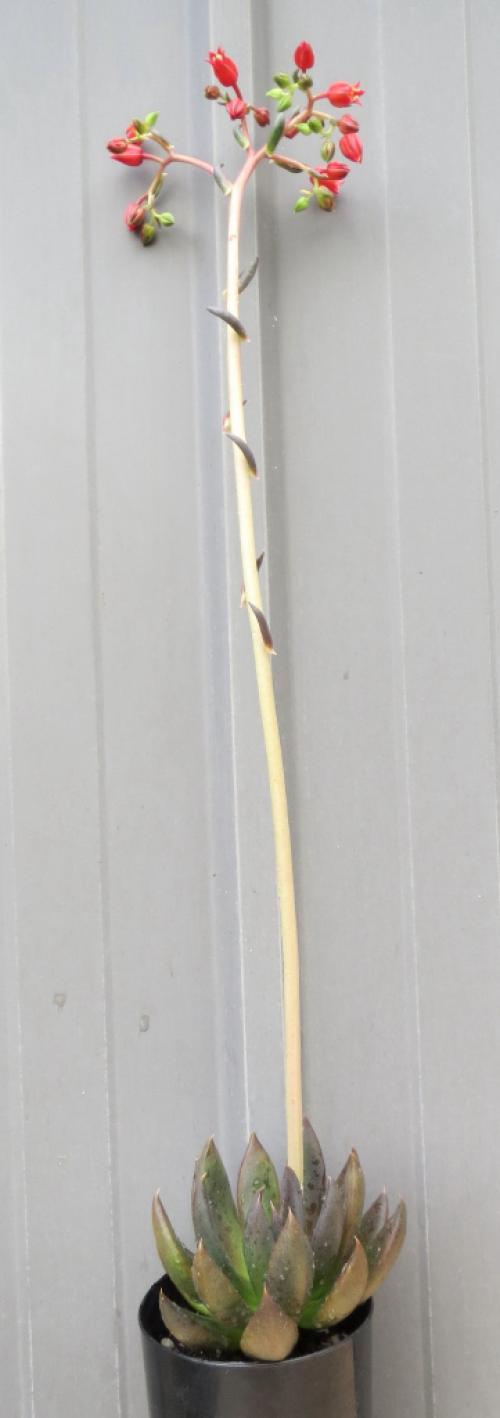
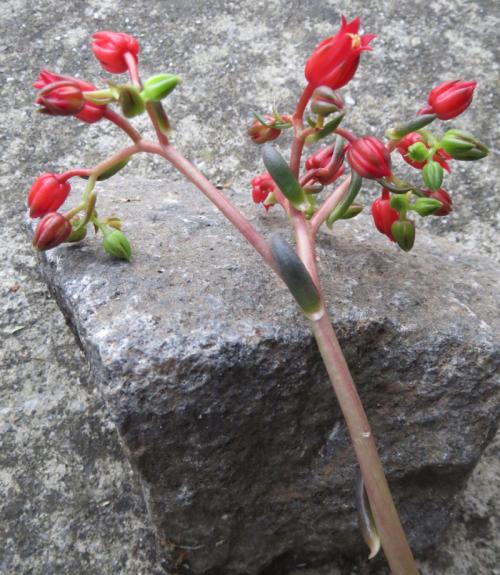
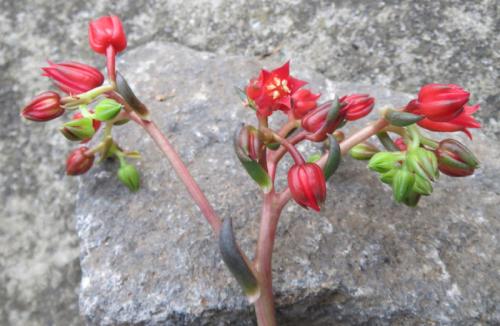
Photos Noelene Tomlinson
